

They are extensional structures, created when the overburden slides (translation) over a single stepped detachment surface (top salt), as described previously using the geological model proposed by AGL.
For more complex detachment surfaces, the AGL’s hypotheses can be summarized as follows:
A) Single Buried Step (see plate below)
Previously was said:
- If the sedimentation rate is insufficient to cover the bathymetric escarpment, each unit will onlap above the step ;
-Onlaps are translated basinward after deposition, producing a landward-dipping package of apparent down la ping strata ;
-The distance from a given onlap to the step records the amount of translation since the deposition of that unit.
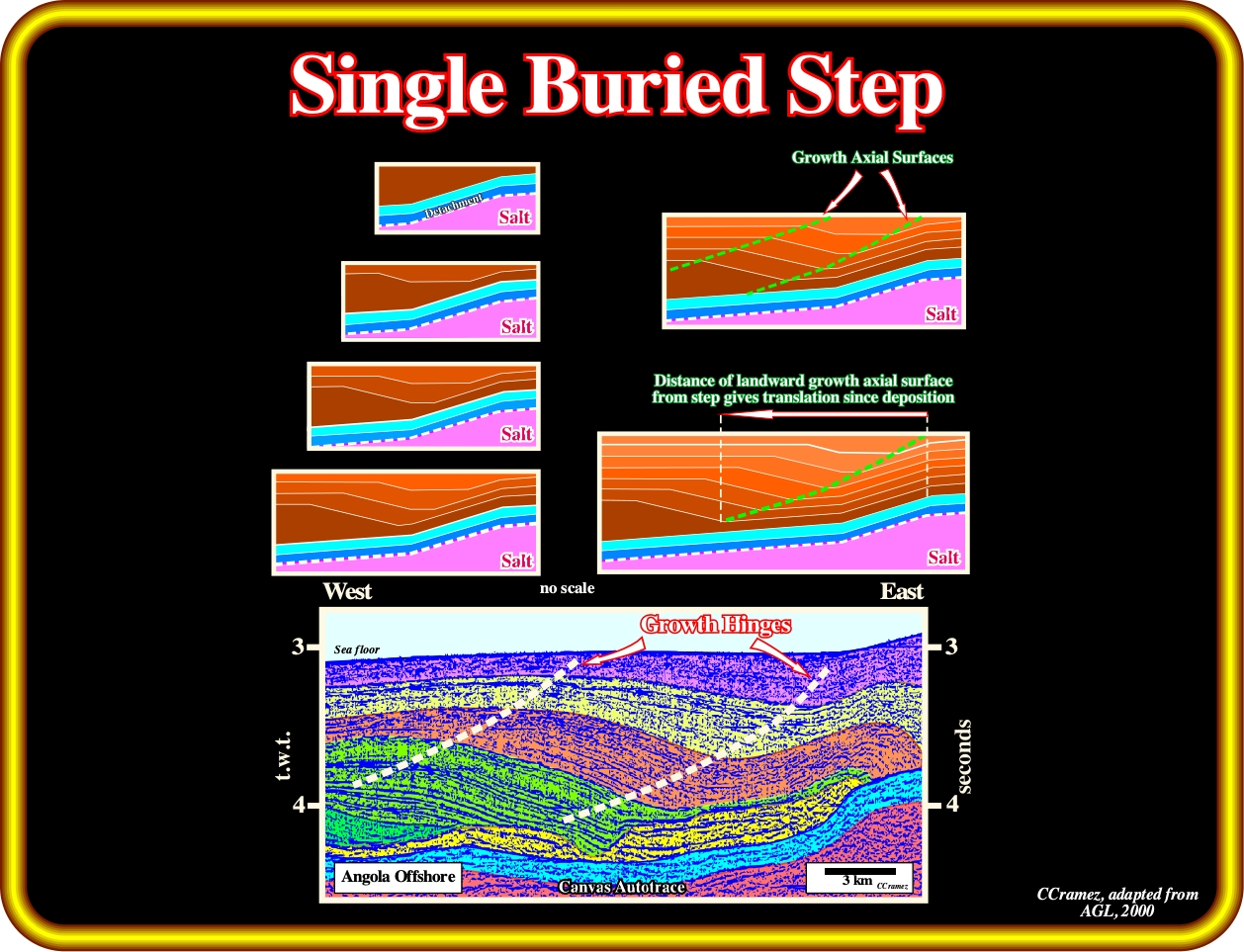
The tentative geological interpretation of the seismic line illustrated above was made using the mechanism proposed by AGL to explain the geometry of the overburden in certain areas of the offshore Angola, particularly around the fracture zones, which have been recognized for a long time (see next plate).
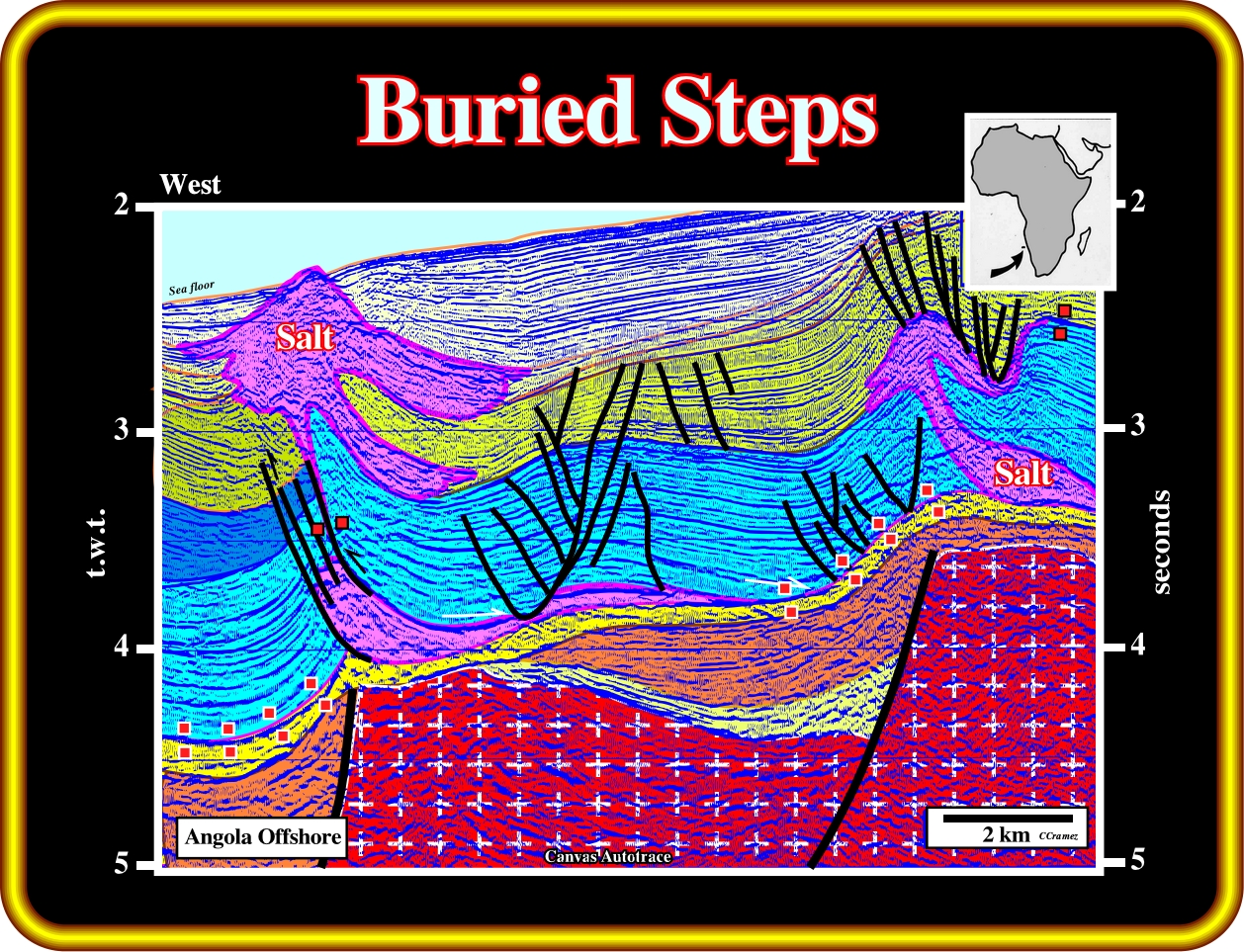
Two fracture zones, associated with the reactivation of the normal-faults bordering the rift-type basins, create two buried steps at the level of the tectonic disharmony. Therefore, when the overburden glided seaward, apparent downlap surfaces were created in association with the synkinematic layers. The growth hinges of the synsedimentary extensional structures are well visible, at least in the blue interval on the central part of the line.
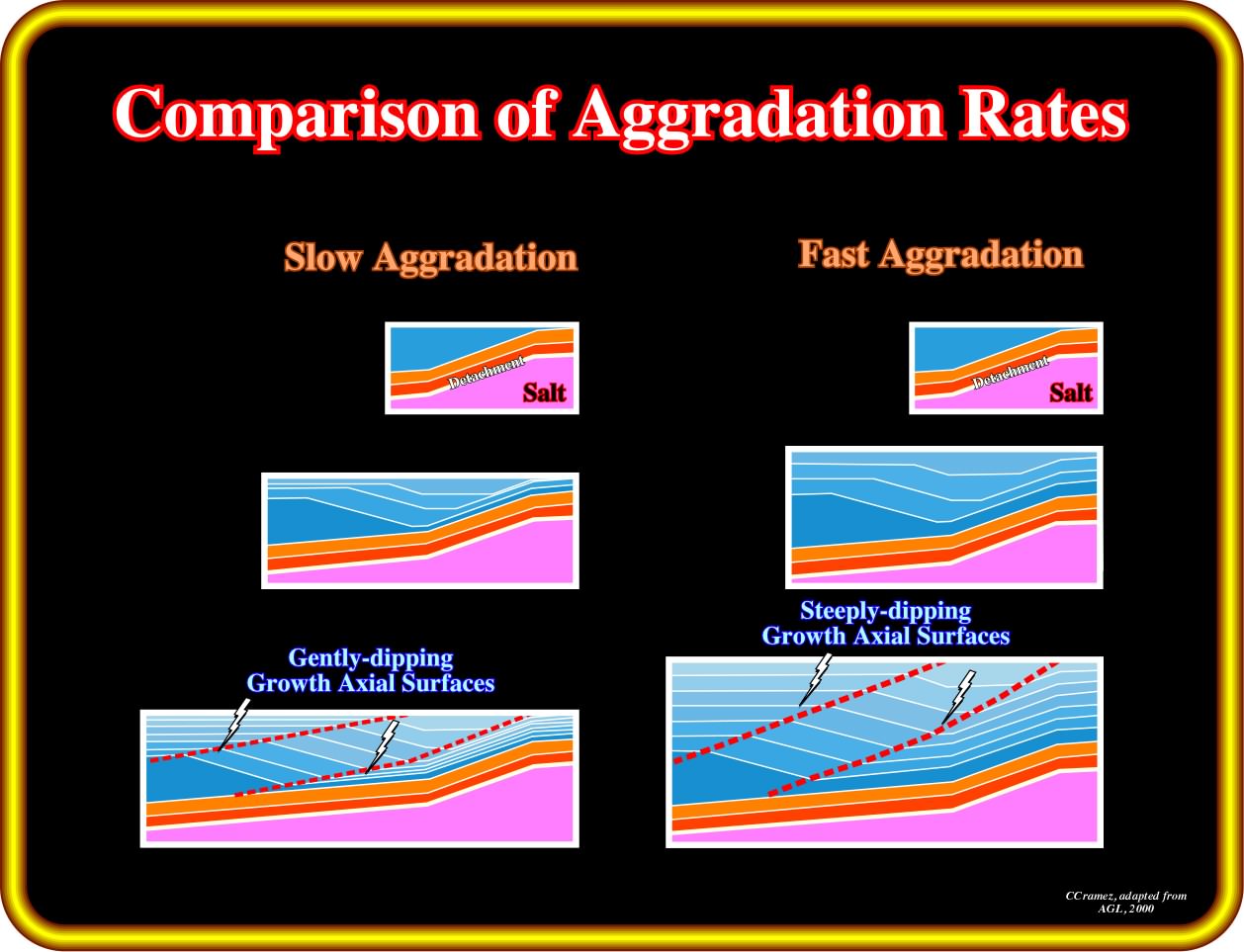
If the sedimentation rate is high enough to cover the bathymetric escarpment above the step, each stratigraphic unit will form a depocentre seaward of the step. As older depocenters are translated basinward, younger depocenters form at the step. Continued translation produces a shingled series of landward-dipping sediment thicks, bounded by two growth axial surfaces. The distance between the step and the intersection of a horizon with the landward growth axial surface records the translation since the deposition of that horizon. For a given translation rate, faster sedimentation produces steeper growth axial surfaces.

On this regional cross-section of the southern offshore Kwanza, proposed by BHP’s geologists in 1998, an apparent downlap surface, above the prekinematic layers of the overburden, is recognized seaward of a major step. It correspond either to the reactivation of salt step or to the reactivation of a fracture zone. The apparent downlap surface (translation onlap surface) is the consequence of the translation of the overburden over the buried step at the top of the prekinematic layer. The reactivation took place immediately after the deposition of the prekinematic interval. The seaward translation of the synkinematic layers creates enough space to allow a significant landward thickening. This mechanism is, at large scale, similar to that responsible for back-raft and fore-raft structures
B) Single Emergent Step with Salt Diapir
Certain seismic lines from offshore Angola (next plate) can be easily interpreted assuming the gliding of cover (salt layer + overburden) over a single step with the interference of a salt diapir.
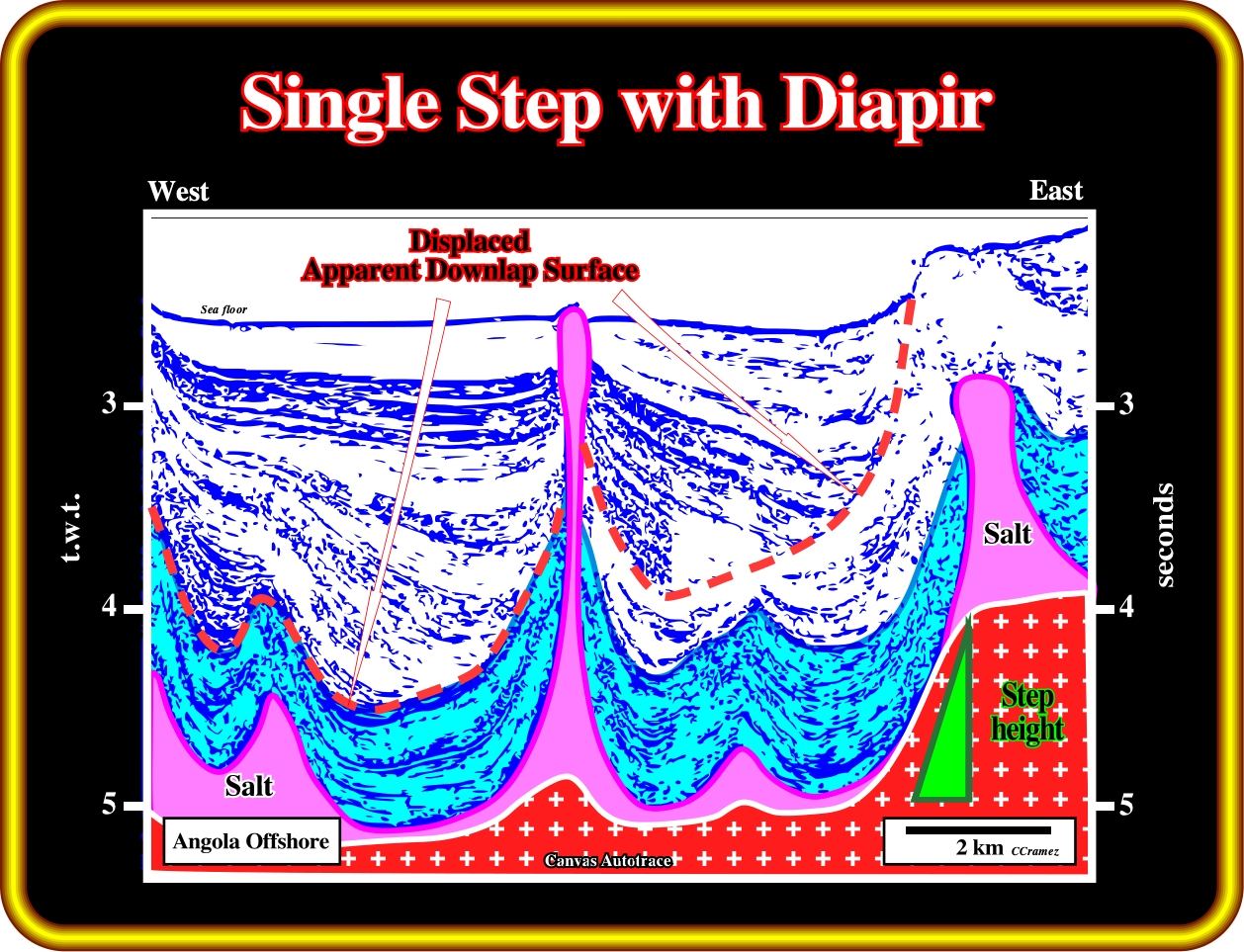
The step, at the bottom of the salt, is evidence, as well as, the apparent downlap surface, which is offset by the central diapir. Taking into account that the salt was displaced down-dip, by translation, at a given time, the central diapir was above the step, as illustrated in the AGL’s model (see next plate).
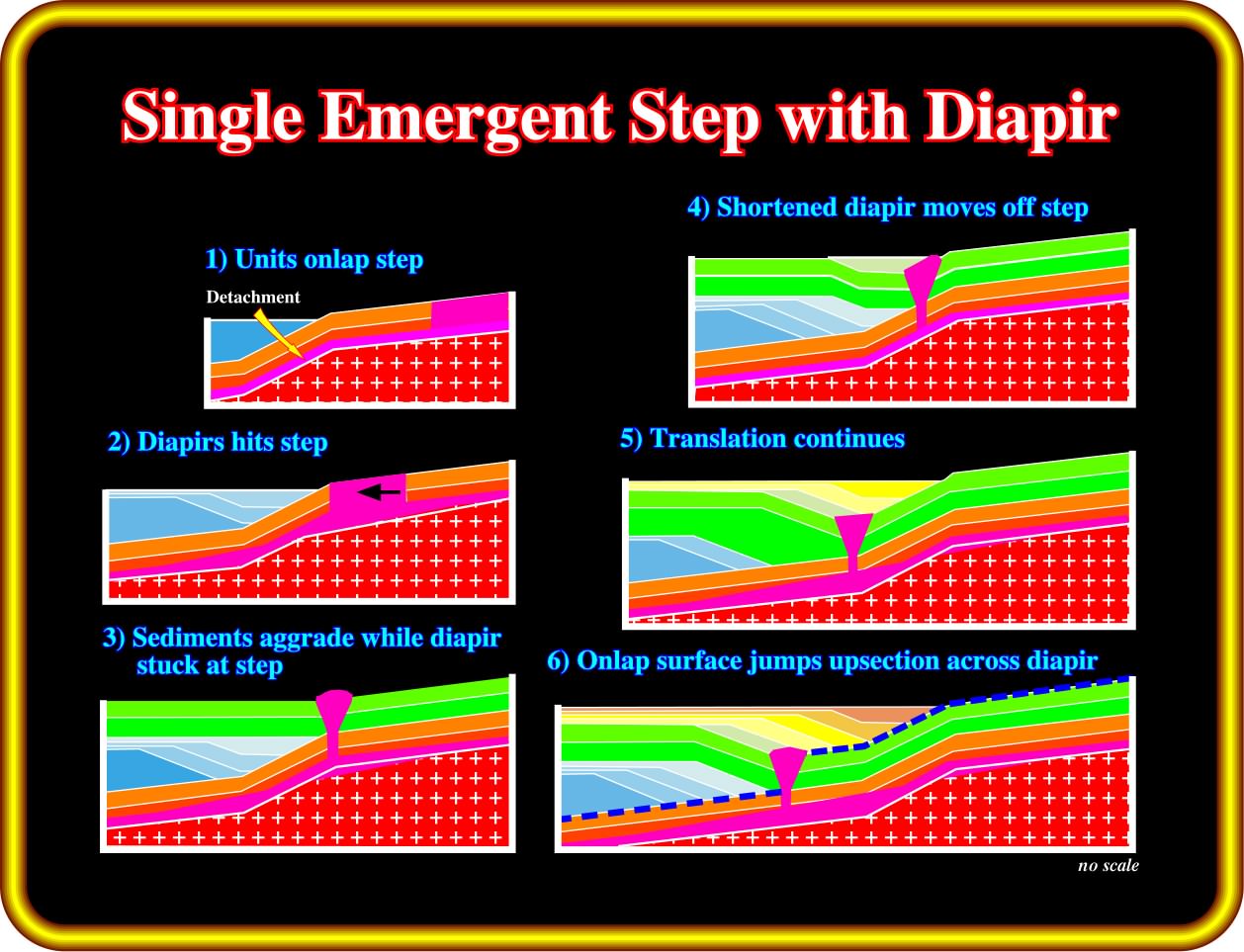
When a diapir reaches the step, it begins to shorten laterally. Translation is absorbed by diapir contraction. The units basinward of the step do not move until the diapir has finished shortening. Diapir narrowing elevates its roof, which may lead to erosion and salt extrusion. Sediments landward of the step are commonly pounded behind the elevated diapir roof. The apparent downlap surface jumps up-section across the diapir. The jump in age measures how long the diapir remained at the step.
C) Two Emergent Steps
On the seismic lines of the deepwater of Angola, very often, one can observe two or more steps at the bottom of the salt. The associated geometry of the cover can be readily recognized when knowing the following geological models (next plates). Again, one can say: Theory precedes Observation.
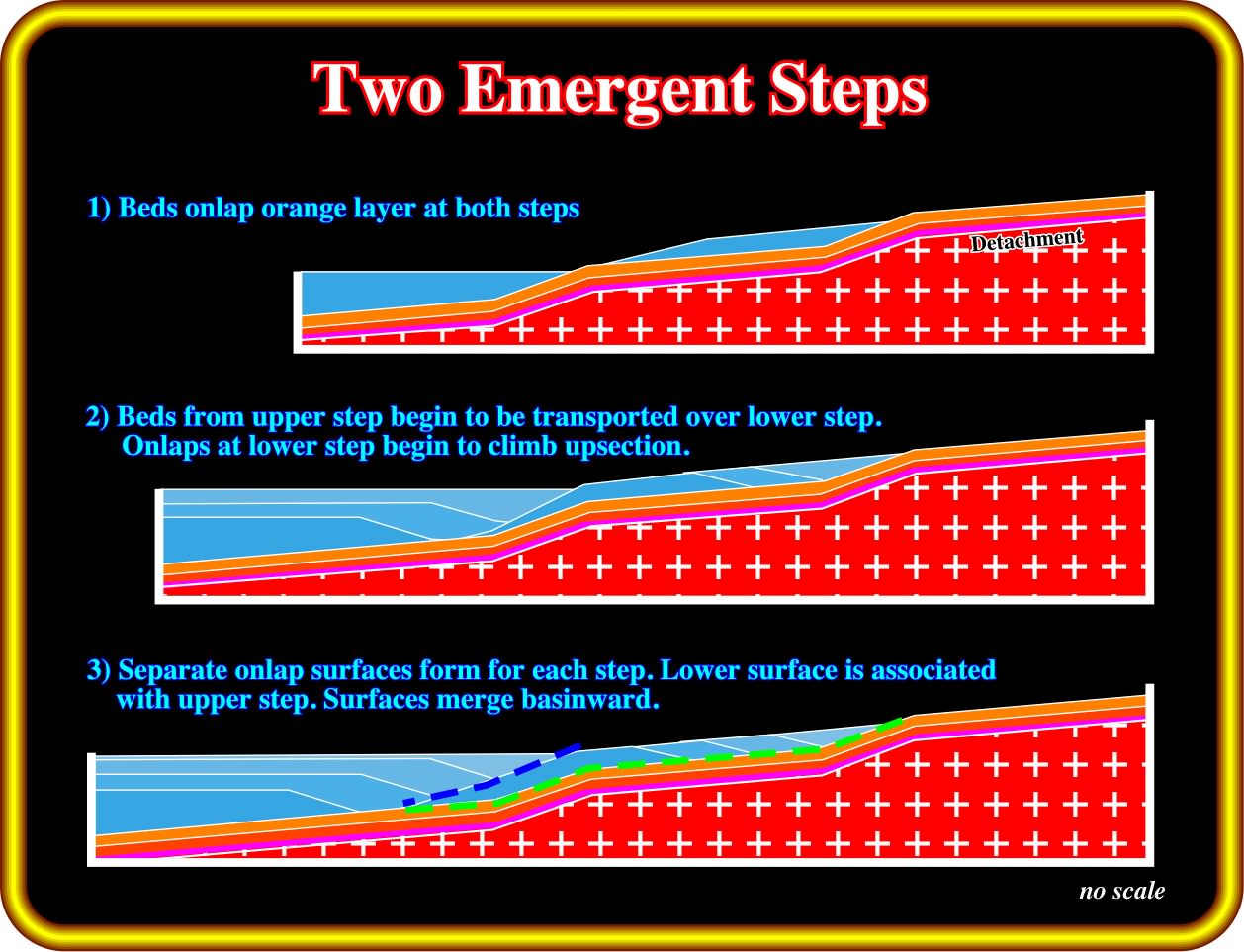
Two steps will create twin apparent downlap provinces if sedimentation rates are not high enough to bury the scarps. Time-equivalent apparent downlaps are separated by the step spacing, which constitutes, a powerful tool for correlation. Apparent downlap associated with the lower (basinward) step climb up-section over units deposited at the upper (landward) step as they are translated basinward.
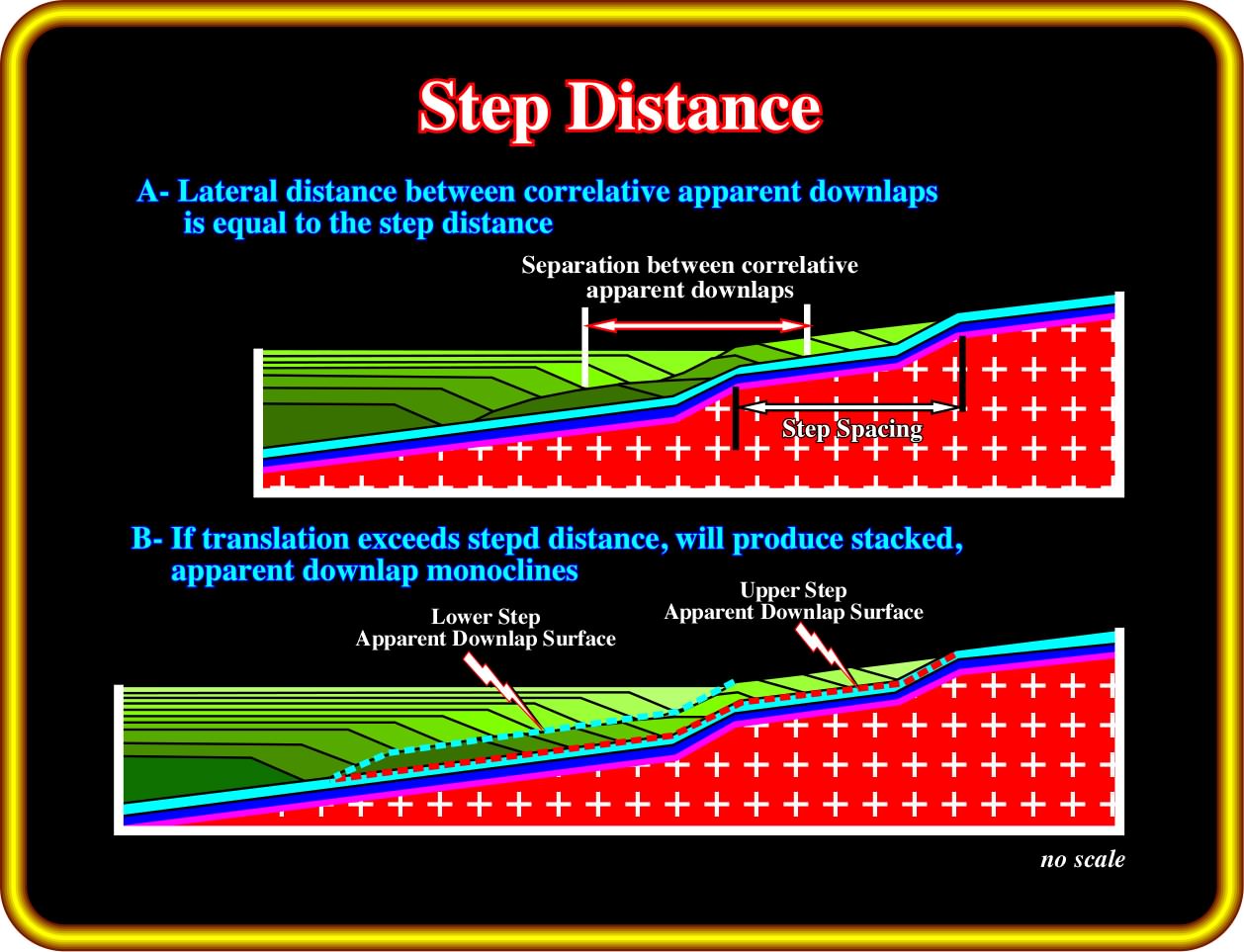
If translation exceeds step spacing, stacked, landward-dipping, apparent downlap monoclines result. This geometry is thought to be diagnostic of stepped detachment systems.
D) Two Emergent Steps with Salt Diapir
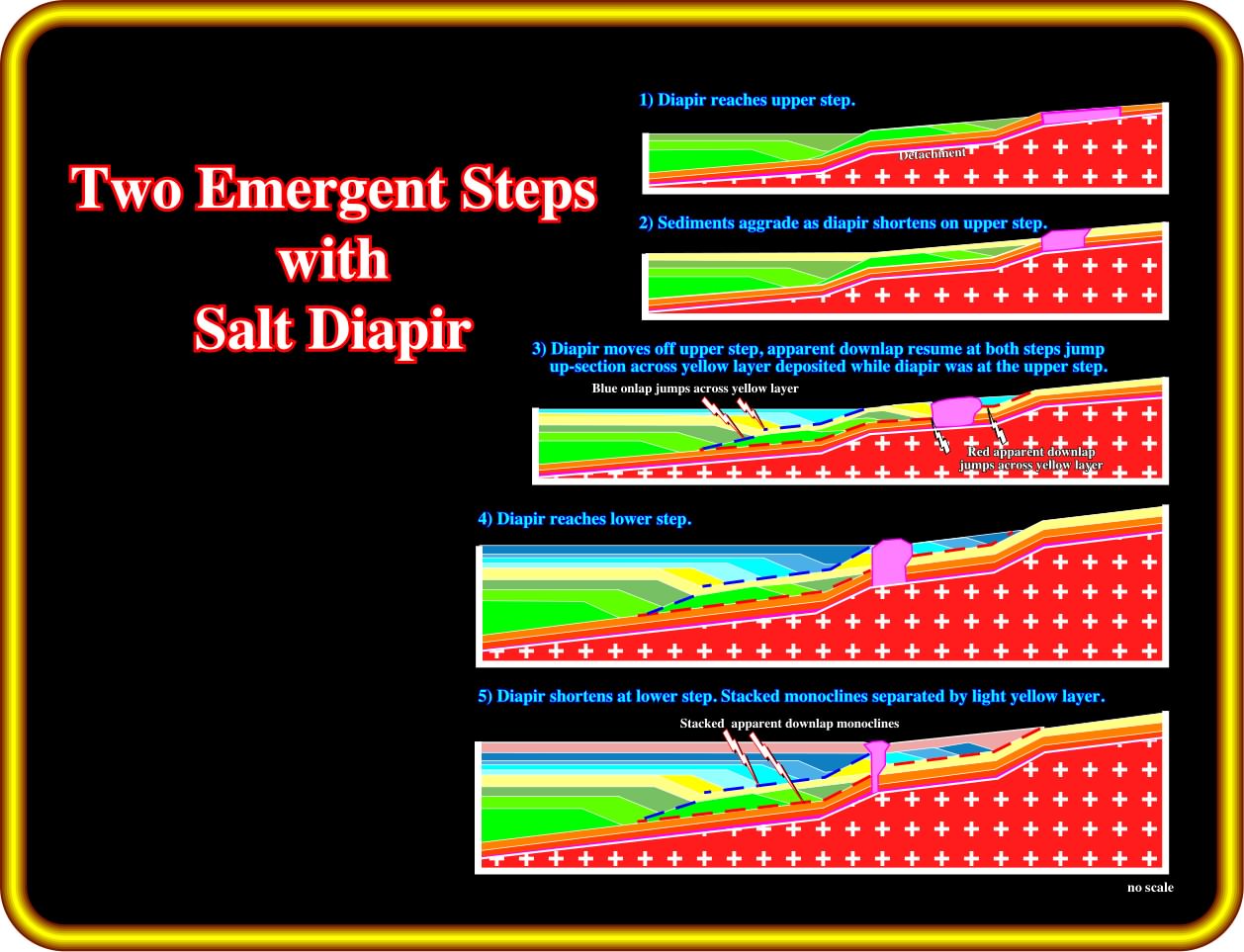
Whenever a diapir is shortening at a step, sediments aggrade seaward of the step. When translation resumes and the diapir move off the step, all apparent downlap surfaces jump up-section across the aggraded layer. An aggraded layer will thus separate stacked apparent downlap monoclines.
The important of stepped detachments in seismic interpretation can be summarized as follows:
a) If detailed age control is not available, stepped detachments can be used to:
(i) measure total translation ;
(ii) establish correlations between steps and across diapirs.
b) If detailed age control is available, stepped detachments can be used to :
(i) determine translation history, establishing position of migration windows relative to sub-salt maturation kitchens ;
(ii) calculate translation rates ;
(iii) estimate length of time that systems stalled with a diapir shortening on a step ;
(iv) compute original diapir widths.
Summing up:
Translation across a stepped detachment system creates diagnostic stratal patterns. Not all-stratigraphic variation in a salt-involved detachment is salt controlled. In multi-step systems, these stratal patterns can be a valuable correlation tool. A wide variety of geometries are possible, depending on sedimentation rate, translation rate, number of steps, and position of salt structures. Interpretation of stepped detachment systems allows estimation of translation past a fixed point - a powerful constraint on regional restorations.
Exercise 1:
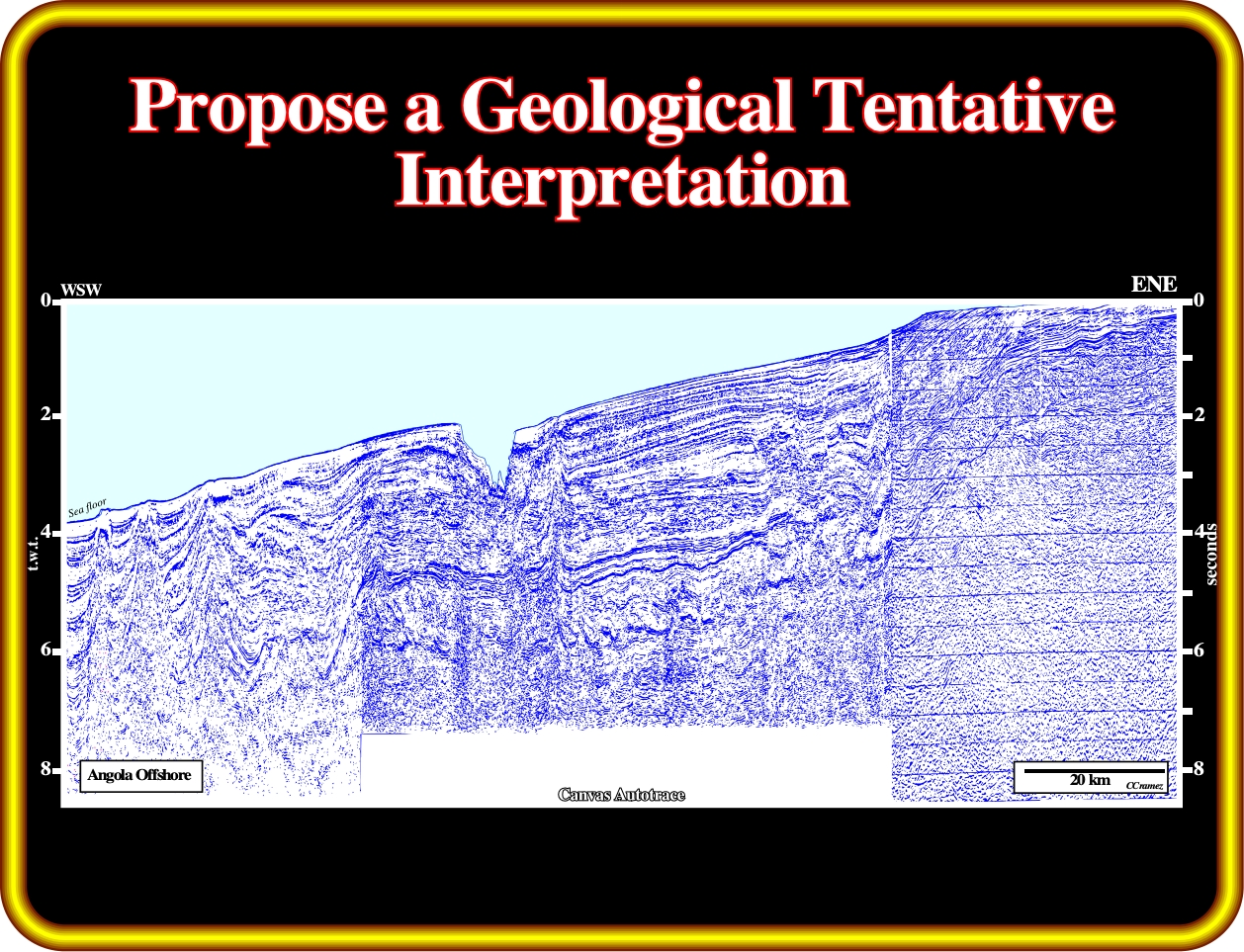
Taking into account the hypotheses advanced previously, on this composite line of the Angola northern offshore (South Congo basin), you must recognize :
(i) A Late Tertiary uplift, particularly in the conventional offshore ;
(ii) the tectonic disharmony (bottom of the salt or salt weld) ;
(iii) pre-raft and raft structures ;
(iv) Tertiary depocenters ;
(v) Fracture zones ;
(vi) Buried steps at the bottom of the salt layer and apparent downlap surfaces created by translation.
Finally, try to localize the more significant apparent downlap surfaces and you will realize that, at least, one is inverted due to the uplift.
Exercise 2:

Try to refute this geological tentative interpretation. Justify your critiques. Summarize the geological conjectures or hypothesis assumed by the interpreter, since all observations are theory dependent.